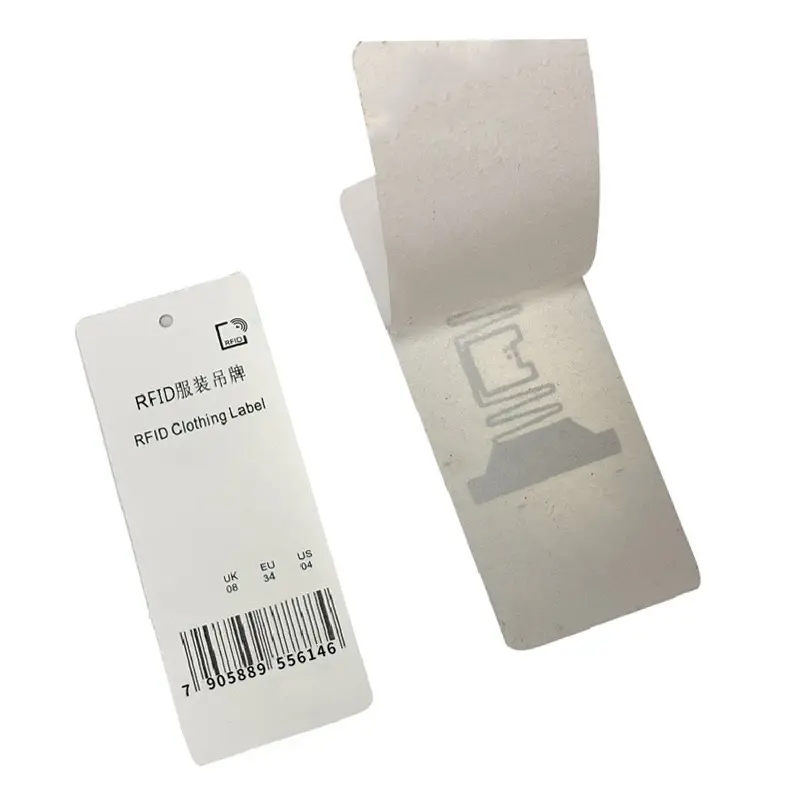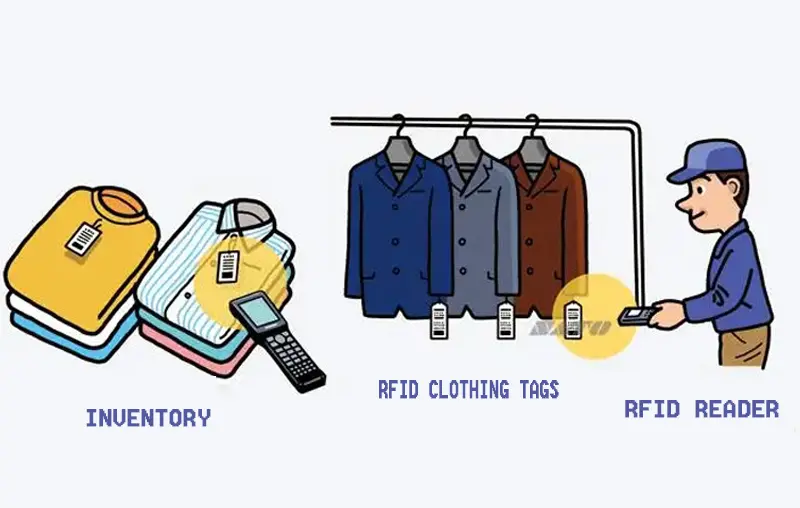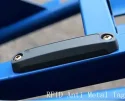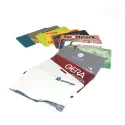2022-08-16
The garment industry is a highly integrated industry, which integrates design, garment production, transportation, and sales. In these processes, the traditional clothing supply chain often consumes a lot of human resources, materials, and fi, and nances, but the effect is mediocre. Therefore, the senior management of the enterprise introduced UHF RFID technology to develop the clothing application of clothing tags. Today, the use of RFID clothing tags in the clothing industry has a history of more than ten years. It has been recognized and used in more and more fields because of its non-contact type, far reading distance, fast recognition, the large amount of stored data, and more and more wide applications. From the garment production, processing, quality inspection, storage, logistics transportation, distribution, sales, and other links have carried out information management.

What problems does an RFID clothing tag solve?
1. To bind Clothing information
In the production process, the color number, specifications, standards, the article number of fabrics, washing method, and a series of information are written in the RFID clothing tags to ensure that each piece of clothing has a unique and hard-to-forget RFID electronic label. RFID read-write device can manage clothing production and scheduling by using RFID clothing tags. The RFID technology also solves the problem of anti-counterfeiting.
2. Take stock of the clothes more efficiency
In the traditional transportation and storing of clothing, the receiving, delivery, inventory, and other links are all manually operated, which is not only inefficient but also prone to errors. By using the reader to read the stored information of the RFID clothing tag, it can achieve fast contactless identification and sort without unpacking. When the clothing is passed through the entrance and exit of the warehouse, the fixed RFID reader installed at the entrance and exit reads the information of the RFID clothing tag, and the RFID hand-held device can also be used for quick inventory and search of the clothing in the warehouse, and the error of picking can be verified instantaneously, without interference from human factors. The application of RFID technology in clothing transportation and storage greatly improves the efficiency of receiving, distributing, shipping, inventory, and other processes, reduces the error rate, liberates the labor force, and saves cost.
3. Quickly check clothing information in retail stores
When clothing retail stores receive goods from clothing manufacturers, they can use RFID handheld readers to check the number of goods and clothing types, which can improve the speed of receiving goods and ensure accuracy.
4. Quickly acquire the customer's clothing preferences
Through the installation of an RFID reader in the fitting room, each time the customer tries on the clothes will be counted, the frequency of each garment will be counted, combined with the purchase results, the customer's favorite style will be analyzed, and the customer's purchase turnover rate will be improved.
5. Out-of-stock alarm, timely replenishment
Through the RFID sample clothing management system, when there is a shortage of a product in the sample clothing warehouse, it can not only automatically prompt the alarm, but also be subdivided into the details of product components such as type, color, size, and so on, to truly realize the fine management.
6. Automatically update the number of clothes
The RFID reader is set at the cashier. After the clothes are sold, the RFID tag is unbound from the system and the state is changed automatically.

7. Burglar alarm
The UHF RFID reader has the relay output function inside, that is, when the UHF RFID reader reads the tag or the tag in a specific format, the UHF RFID reader will close the relay, thereby triggering the closure of the external relay, and start the alarm or alarm indicator to alarm. There are several situations for RFID tag anti-theft: The RFID tag of the clothing store needs to be recycled. In this case, the reader installed at the door of the clothing store only needs to read the tag to trigger the external alarm. The RFID tag is not recycled clothing store, clothing store UHF RFID read-write device available for customers to purchase clothing tag, define a byte of data, when the byte 0 said not to buy, rewrite to 1 says it has to buy, when the door of reading, speaking, reading and writing into not rewrite tag, trigger an external alarm, and read after the rewrite tag, Does not trigger the external alarm. This is a good way to solve the misunderstanding caused by tag reading and writing.
8. Check the shift
When taking over the shift, using the RFID handheld to carry out the bulk inventory of clothing tags, RFID clothing tags within a few meters can be read, improving the efficiency and accuracy of the shift inventory
9. Statistics of unsold goods to maximize profits
Apparel product backlog warehouse is a very headache thing, with RFID sample statistical drug management system, for each product (subdivided into the model, color, size) of residence time in the library, you can quickly find which products unsalable, out-of-season, managers can very quickly make the price decision or change, speed up product sales and capital turnover.
According to the practice data of retail customers, customers have gained a lot by using RFID technology. In the warehousing link, the inventory accuracy rate has increased to 99%. Inventory reduction of 10%-20%; The efficiency of receipt, delivery, and inventory has been improved by more than 300%. In the supply chain: the delivery error rate was reduced by 99%; Logistics efficiency improved by more than 30%; Abnormal event detection probability increased by more than 30%. In the store: goods missing and theft reduced by 50%-70%; Store sales increased by 5%-20%; Service efficiency will be improved by 10%-25%.
Categories
Title with button
this is a new beginning
We provide all your needed for starting your own online business, and even easier. Establish an online store, Oceans of Products Supply, Integrate Logistics Solution & Comprehensive After-sale Services.




